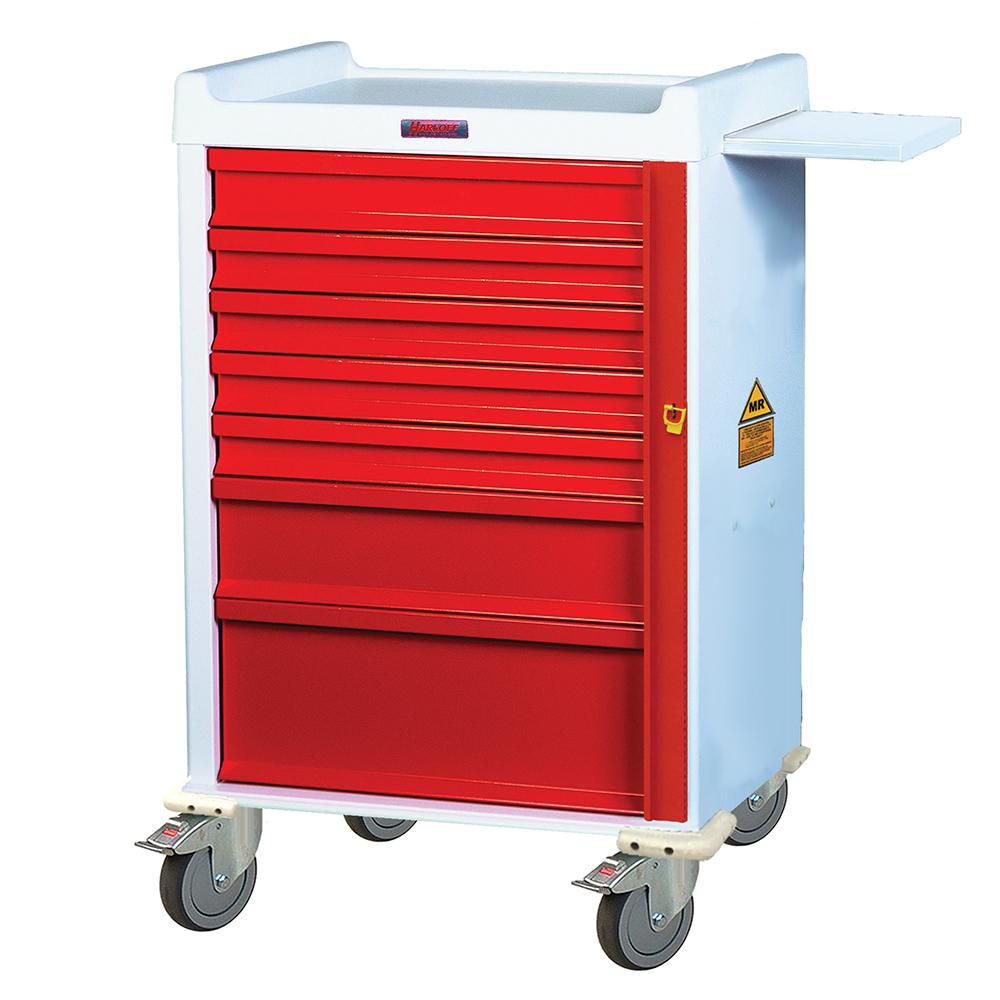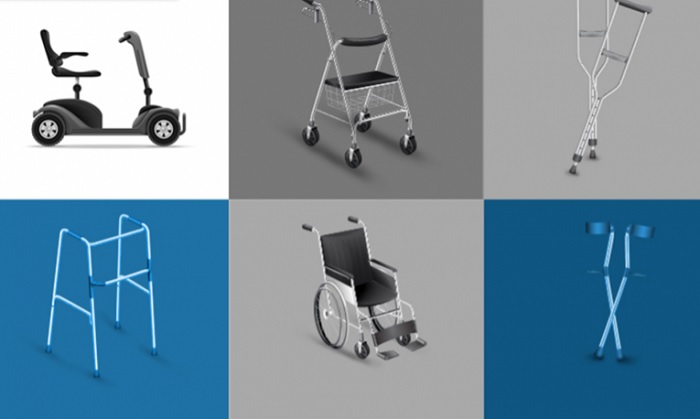-

Standard Line Med Bin Cart - SL36BIN5
$4,494.00

A Comprehensive Guide to Durable Medical Equipment and Mobility Devices
-
Jun 07,2023
Have you or someone you know ever needed medical equipment or mobility aids? If so, you may have found it overwhelming to navigate the world of durable medical equipment (DME) and mobility devices. What are the differences between a wheelchair and a scooter? Are all walkers created equal? How do you choose the right equipment for your needs?
Durable medical equipment and mobility devices play a significant role in the lives of millions of people worldwide. They help individuals with a range of medical conditions maintain their independence and quality of life. With so many options available, it can be challenging to know which products are suitable, safe, and reliable.
That's why this guide to durable medical equipment and mobility devices is here to help. From power scooters to lift chairs and everything in between, we'll cover the different types of equipment, their features, and how to choose the right one for your needs. We'll also provide important information about insurance, regulations, and maintenance, so you can make informed decisions and get the most out of your equipment. Whether you're a healthcare professional or an individual looking to buy or rent medical equipment, this comprehensive guide will be a valuable resource.
As we age or experience physical limitations, mobility can become a difficult challenge. Fortunately, there are technologies and devices available that help to improve and maintain mobility, allowing individuals to live more fulfilling and comfortable lives. In this comprehensive guide, we'll explore the topic of durable medical equipment and mobility devices, from the types and functions of equipment available to coverage and reimbursement options, as well as maintenance and care. Additionally, we'll delve into other assistive technologies for those with disabilities or mobility limitations, and provide resources for further information.
Durable medical equipment, commonly known as DME, refers to a range of equipment designed to aid individuals with mobility limitations or disabilities with everyday tasks. DME can include items such as wheelchairs, hospital beds, walkers, and oxygen machines. Mobility devices, on the other hand, include crutches, canes, scooters and power chairs. DME and mobility devices are essential for maintaining independence and improving quality of life for individuals with physical limitations.
1. Types Of Durable Medical Equipment (DME) And Their Functions
There are a variety of DME available to suit different needs and preferences. Some common types of DME include:
- Wheelchairs: This is a device with wheels and a seat that allows individuals who are unable to walk to move around and perform everyday tasks. They can be manual or electric-powered and come in different shapes and sizes depending on the individual's needs.
- Walkers: Walkers provide support for individuals who struggle with balance or require more stability when walking. They are often composed of four legs and handles, and can be used indoors or outdoors.
- Hospital Beds: These provide support and comfort for individuals who need to spend extended periods in bed due to illness or disability. They can be adjusted to multiple positions, including upright and reclined.
- Oxygen Machines: These devices help individuals with breathing difficulties get the oxygen they need. They are available in different sizes and styles, including stationary and portable options.
2. Mobility Devices
Mobility devices are designed to support people with mobility limitations move around with ease. Some common mobility devices include:
- Crutches: Crutches are an assistive device that provide support to people who have injured lower legs or feet. They assist in bearing weight on the affected limb so the patient can continue to move around.
- Canes: Canes provide support and balance while walking, typically for individuals who don't require as much support as walkers offer.
- Scooters: Scooters are powered devices that can assist people with limitations to move around by themselves. They can be used indoors and outdoors, and come in a variety of sizes and styles.
- Power chairs: Motorized wheelchairs are electric-powered and provide comfortable seating, excellent maneuverability, and can be used on any terrain.
3. Coverage And Reimbursement For DME And Mobility Devices Through Insurance And Medicare/Medicaid
Paying for durable medical equipment and mobility devices can be expensive. However, Medicare, Medicaid, and private insurance can help cover the cost of these devices. Medicare/Medicaid will cover the cost of a device if the patient has a qualifying medical condition that requires the use of the device. Private insurance policies vary on DME coverage, so it's important to check your policy for coverage details.
4. How To Thoose The Right DME/Mobility Device For Your Needs And Getting A Prescription From Your Doctor
Choosing the right equipment for your needs is important to ensure your comfort and safety. It's essential to speak with your healthcare provider or a qualified provider to identify the necessary device and required functionality. After identifying the right device, a physician will prescribe the device, which should be taken to your equipment provider to ensure proper sizing, correct fit, and appropriate adjustments.
5. Maintenance And Care For DME/Mobility Devices To Ensure Longevity And Safety
To ensure the longevity and safety of your device, regular maintenance and care are essential. Each device comes with unique instructions and precautions. You should follow these instructions carefully to extend the life of your device and prevent any accidents. Remember to keep up with cleaning, lubricating, and regularly servicing your device to maintain optimal performance.
6. Beyond DME/Mobility Devices: Other Assistive Technologies To Improve Quality Of Life For Individuals With Disabilities Or Mobility Limitations
Beyond DME and mobility devices, there are other assistive technologies available to improve the quality of life for individuals with disabilities or mobility limitations. Some of these include:.
-Home modifications like grab bars, wheelchair ramps, and lift systems.
- Hearing aids and cochlear implants for the hearing-impaired.
- Communication devices for nonverbal individuals.
7. Conclusion and Resources For More Information
Durable medical equipment and mobility devices are essential to those who experience physical limitations, allowing individuals to maintain their independence and increase their quality of life. Luckily, various types of DME and mobility devices are available.




